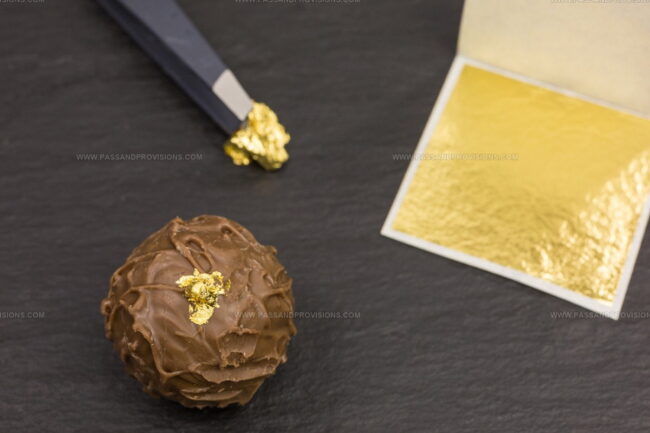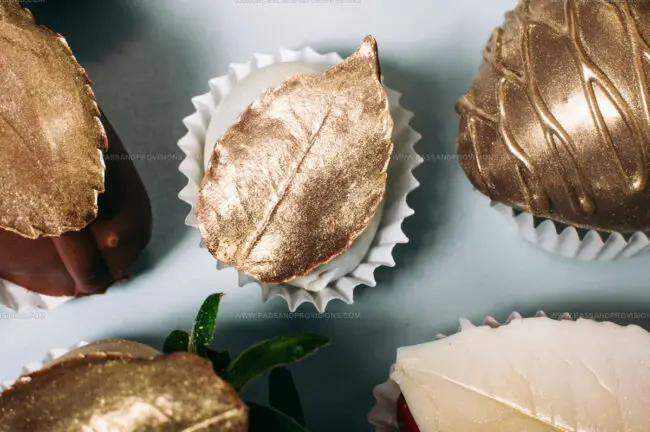What Does Edible Gold Taste Like? It’s Not What You Think!
Gold leaf, a luxurious culinary decoration, sparks curiosity among food enthusiasts and adventurous diners worldwide.
Chefs have been incorporating this precious metal into gourmet dishes for centuries, transforming ordinary plates into extraordinary experiences.
Some people wonder about the sensory experience of consuming such an extravagant ingredient.
Professional kitchens and high-end restaurants often use gold as a stunning visual element that elevates presentation and perceived value.
While many assume gold might have a distinctive flavor, the reality might surprise you.
Culinary experts have unique perspectives on this shimmering ingredient that goes beyond mere aesthetic appeal.
This article will unravel the intriguing world of edible gold and provide insights that will satisfy your gastronomic curiosity.
What Is Edible Gold?
Gold sheets meant for food decoration provide a unique touch to dishes.
These gold items pass safely through your body without being absorbed.
Sheets and flakes work best in sweet treats and candy making.
While gold remains one of the most costly food items, small amounts cost less than solid gold.
Quality matters when selecting gold for eating, so buyers should pick carefully to avoid impure products.
Gold for food serves no flavor purpose but creates a shiny look on plates.
People use this special metal in multiple forms like flakes, powders, and small pieces.
Different food products can include these golden decorations.
Many websites share recipes showing how to use gold in cooking.
Chefs and home cooks enjoy adding sparkle to special meals with these delicate gold pieces.
Gold’s Flavor?
When people talk about food, gold doesn't have any flavor.
Some metals might seem like they have a weird taste, but gold is actually completely flavorless.
People shouldn't worry about gold ruining their meal.
All metals you can eat are tasteless and completely safe to add to different dishes without causing any problems.
Cooks can use gold leaves to make desserts look fancy.
Gold has a delicate feel, but it looks beautiful and won't hurt anyone eating it.
It doesn't change how food tastes, just makes things sparkle.
Special metals like gold have almost no flavor when someone eats them, and edible gold makes meals look more exciting.
Health Effects of Eating Gold
Gold that you can eat is totally safe, even though it comes from a metal.
It moves through your body without getting stuck or causing problems when you eat it.
Benefits Some studies show gold might help with head pain, mood problems, seizures, and joint pain.
People with allergies can also enjoy this special metal because pure gold never triggers reactions.
Problems Gold works fine in your mouth and does not break down in saliva no matter how you use it.
Your stomach won't hurt unless you eat way too much metal.
Chemical reactions Since gold does not change easily, it won't start weird chemical shifts inside your body.
Reaction to liquids Gold never breaks down or changes when it meets water or other drinks.
Calories This gold has no gluten, fat, or calories, and it does not give your body any nutrients.
Expiration date People can keep edible gold for a very long time after buying it.
What Edible Gold Looks Like
Gold for eating comes in different forms that people use to make food look fancy. You can find it in these styles:
Chefs pick which type to use based on what food they want to decorate.
Gold sheets work best because people can tear them into small pieces or create interesting designs. Most cooks prefer sheets since they offer more flexibility when adding sparkle to desserts or main dishes.
Why Add Gold to Food?
Gold you can eat makes food look super fancy.
People used to sprinkle gold on special dishes to show how rich or important they were.
European sweet treats have decorated their surfaces with thin gold sheets for many years.
People have also used gold to make Japanese green tea look special.
Small gold pieces make food sparkle and cost more money.
Fast-food places now serve dishes with gold flakes too.
People want to feel fancy even when they eat.
Top restaurants around the world use edible gold to make meals look extra classy and expensive.
How Edible Gold Is Put on Food
Gold sheets are super delicate and tricky to handle.
They wrinkle or tear easily and are so light that even a tiny breath can blow them away!
Touching gold leaf with bare skin ruins it right away.
Working with these sheets requires special tools like a razor blade or paring knife, a clean dry paintbrush, and cotton gloves.
Chefs move gold leaf sheets using a knife since they stick to most surfaces.
Small tongs or tweezers help remove gold flakes from storage and place them on food.
Restaurants from fancy spots to quick-service places love using gold to make meals look extra special.
Adding gold to dishes creates a unique and eye-catching effect that makes people stop and stare.
Foods That Have Edible Gold
Gold that you can eat shows up on fancy treats like candies and cupcakes to make them look extra special.
Bartenders also like to add gold specks to champagne and other drinks.
Small gold flakes make cocktails look super cool right away.
Loose leaf gold works well when you want to break it into tiny bits for decorating sweets or chocolates.
Transfer leaf helps cover bigger spaces with gold easily.
Cooks use edible gold on all kinds of foods like burgers, sushi, coffee, tacos, and hot dogs.
Sometimes they sprinkle little bits on top of a chocolate or candy.
Other times they might cover whole cakes or sushi rolls with shiny gold sheets.
Why Edible Gold Is Safe
Gold passes through human digestion without being absorbed by the body.
People with no gold allergies can safely eat pure gold.
This rare condition means gold is safe and long-lasting.
Dentists around the world use gold in dental fillings because of its durability.
Pure gold must have at least 22 carats to be safe for eating.
Gold with lower carat levels might contain harmful impurities.
Shoppers should carefully check labels when buying edible gold and confirm the correct carat rating.
High-quality gold leaves are the only type suitable for consumption.
Edible gold ranks among earth's most expensive food items.
Despite being real gold, its flakes and sheets seem reasonably priced.
Gold leaf looks like actual gold and comes from a natural source.
This substance is non-toxic and harmless to humans.
Scientists consider it a legitimate food product.


